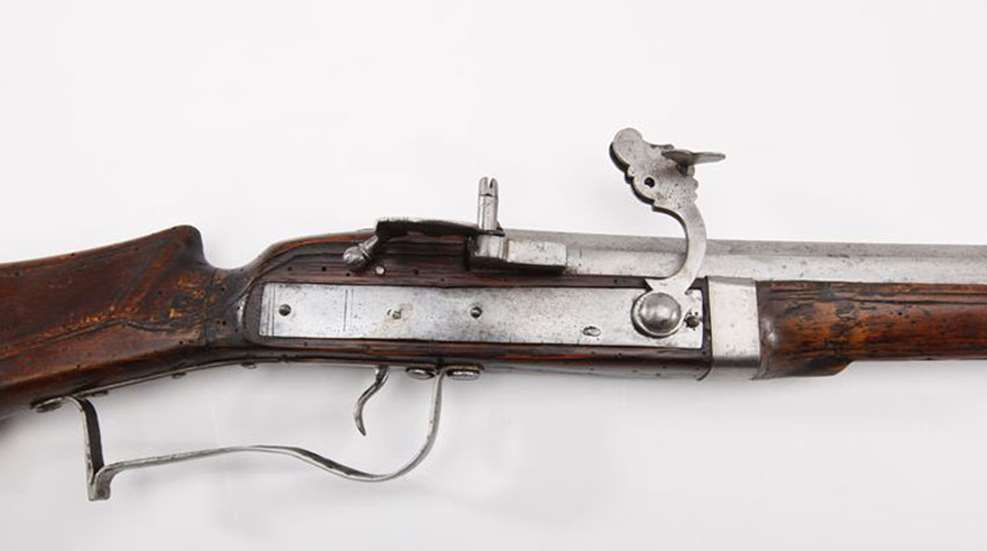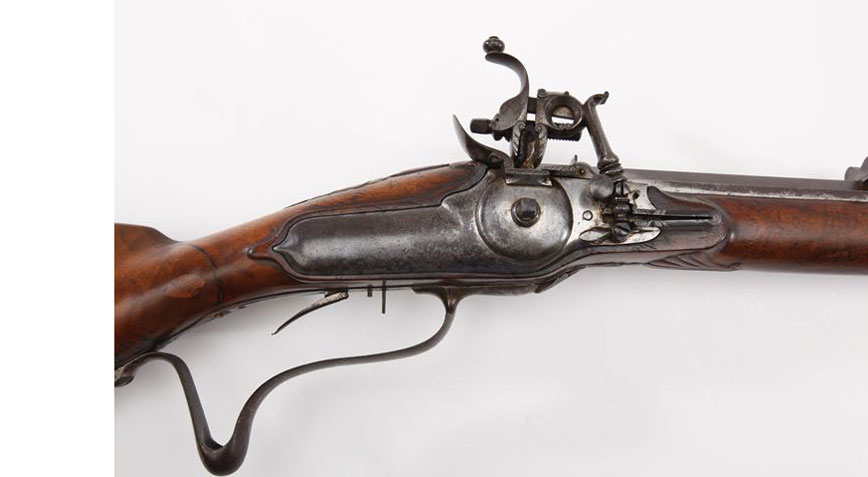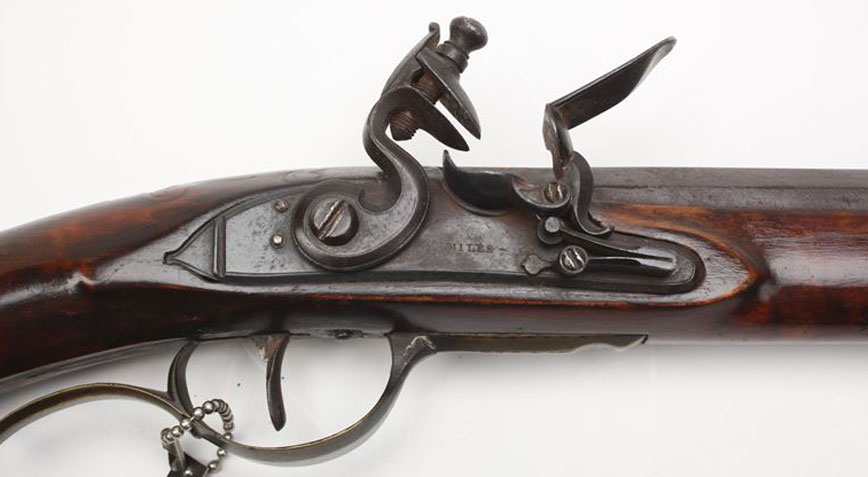
1. Matchlock (pictured above)
The matchlock was the principal firearm used by early American explorers as they ventured into the wilderness. The matchlock was named after the manner in which the firearm was set off. A match ignited the powder to set off the charge. The first "match" was a twisted rope made of hemp which had been soaked in a solution of saltpeter and wine. It burned slowly and steadily. Before "match" was invented, the shooter fired his gun by touching the powder with a red-hot wire or a glowing coal. That meant he could never stray too far from a fire. However, a "match" could burn for hours...allowing the hunter more freedom to pursue game at greater distances.
The matchlock had a simple S-shaped piece of metal called a "serpentine" fastened to it, which held the smoldering match in one curve, away from the priming powder. When ready to fire, the shooter pressed the opposite end of the serpentine. This automatically moved the lighted match, bringing it into contact with the priming powder in the pan, thus setting off the charge. When the pressure was removed, the end of the serpentine holding the match moved back to its former position.
In fact, this serpentine mechanism was the first trigger. With it, the shooter was now able to hold the gun with both hands and aim more accurately.

2. Wheellock
Cool as the matchlock is, it had many disadvantages. Weather was the worst problem. Rain or high wind would put out the match, rendering the gun useless. The solution to this problem came in the form of a new kind of firearm, one that did not need a lighted fuse, but produced its own fire for igniting the priming powder. The device was called a wheellock, and it worked much like the modern cigarette lighter. The wheellock mechanism was wound against the tension of a strong spring. When the trigger was pulled, a serrated wheel revolved against a piece of flint. This caused sparks to ignite the powder and discharge the bullet.

3. Flintlock
Although superior in many ways to the cumbersome and dangerous matchlock, the wheellock, too, had some disadvantages. Its lock was a complicated mechanism and was therefore expensive. It was slow, because the wheel had to be rewound after each shot before the gun could be loaded, primed, and ready to fire again. A more practical ignition mechanism was needed, and the answer came with the flintlock. The new lock was simplicity itself, producing its spark by striking flint against steel. In the flintlock, the flint was clamped to the cock. The steel was directly opposite the cock. When the trigger was pulled, a strong spring snapped the cock down, striking the steel with the flint and producing sparks which fell into the flashpan below.






































